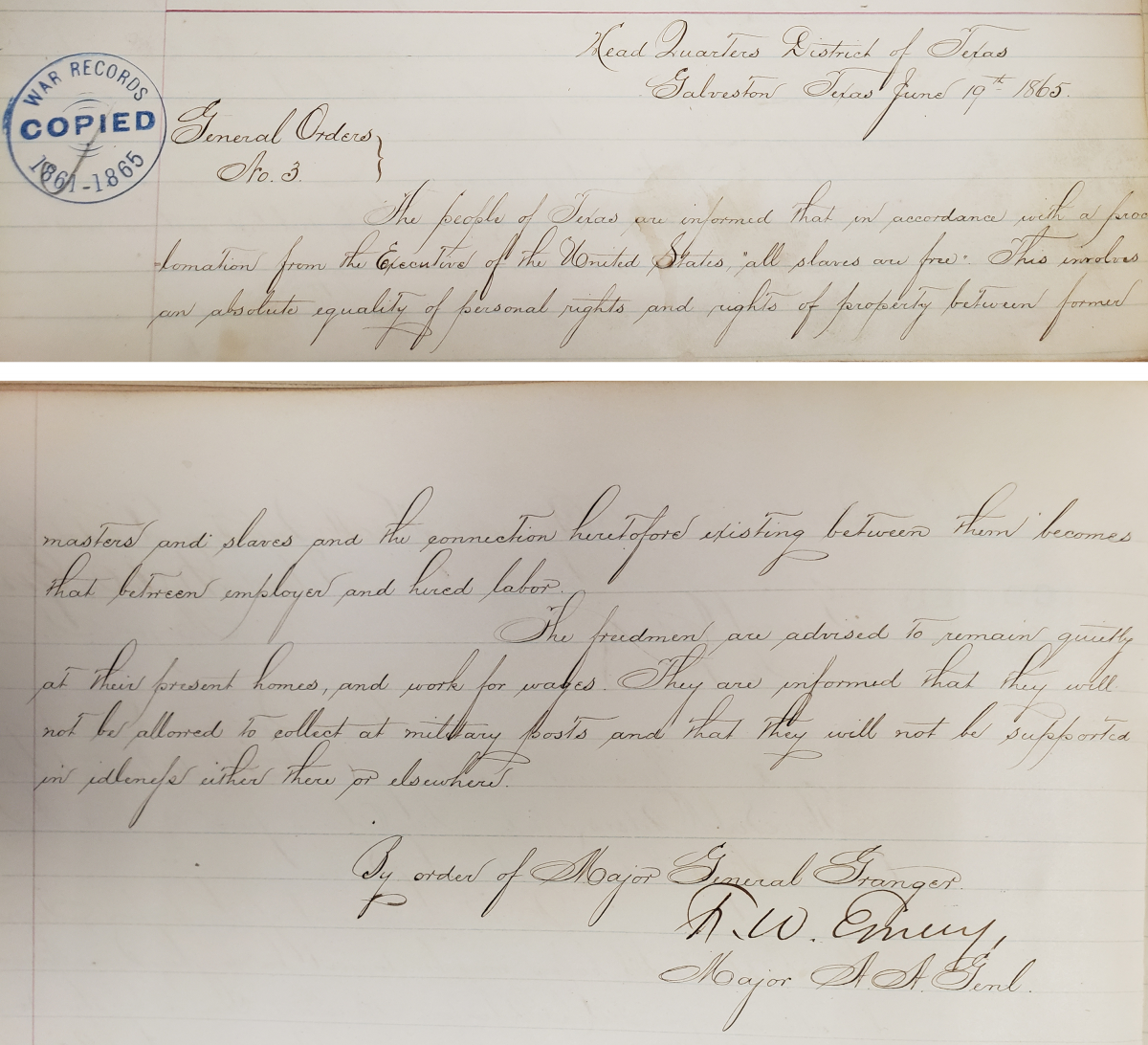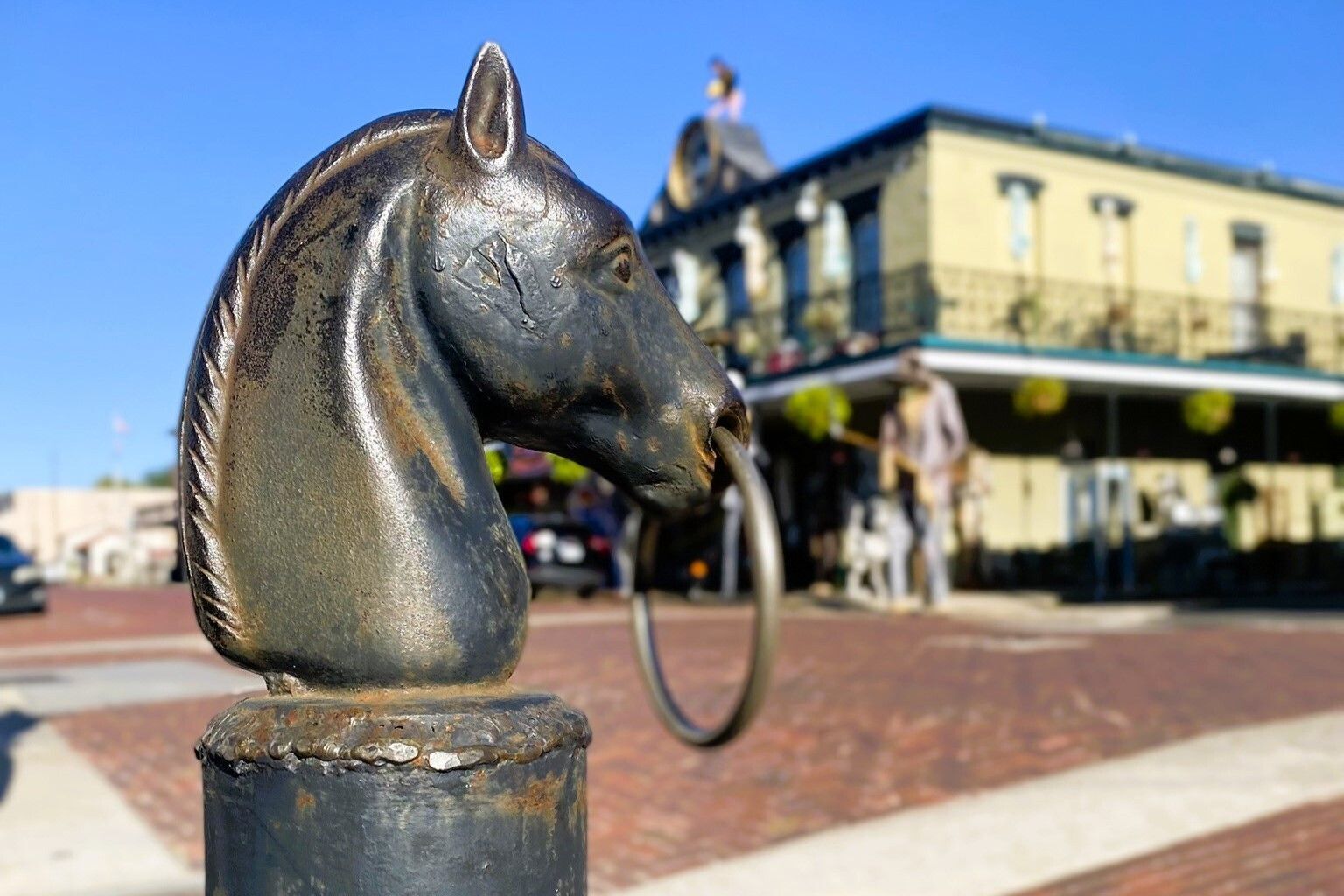
Juneteenth has become an increasingly prominent celebration of emancipation. I recently wrote a book called Juneteenth: The Story Behind the Celebration to provide a historical context for the annual celebration. These are answers to the Top 10 questions I get asked about Juneteenth.
1. What happened on Juneteenth?
On the morning of June 19, 1865, Maj.-Gen. Gordon Granger arrived in Galveston and assumed command of the Union troops in Texas. His third order, General Orders No. 3 (pictured here), provided:
Headquarters, District of Texas
Galveston, Texas, June 19, 1865
General Orders, No. 3
The people are informed that, in accordance with a proclamation from the Executive of the United States, “all slaves are free.” This involves an absolute equality of personal rights and rights of property, between former masters and slaves, and the connection heretofore existing between them, becomes that between employer and hired labor. The freedmen are advised to remain at their present homes, and work for wages. They are informed that they will not be allowed to collect at military posts; and that they will not be supported in idleness either there or elsewhere.
By order of
Major-General Granger
F. W. Emery, Major & Assistant Adjutant General
2. Did the Juneteenth Order free any slaves?
It did and it didn’t. The order credits emancipation to President Lincoln’s earlier emancipation proclamation. That said that enslaved people were free, but in Confederate states like Texas it did not result in their actual liberty. It would take battlefield success to make that happen. In June 1865, the issuance of the Juneteenth Order and the arrival of a large Union occupation force in Texas meant that as a practical matter the institution of slavery had come to an end in Texas.
3. Why was the Juneteenth Order issued?
The Juneteenth Order was designed to put Texas slaveholders on formal notice that the institution of slavery had ended and showed that the U. S. Army was now present in force in Texas and committed to emancipation. The last two sentences were added to notify the freedpeople that they had to continue working at their present homes and would not be allowed to be idle. This last part was particularly important to Union generals, who were increasingly concerned that the freed slaves would leave the crops unharvested and come to the army for support.
4. Who wrote the Juneteenth Order?
From his headquarters in New Orleans, Gen. Phil Sheridan issued an order to Granger on June 13, 1865, directing him to notify the people of Texas that “all slaves are free” as soon as he arrived in Galveston. He also told Granger to advise all freedmen to “remain at home,” and to issue a warning that they should “not collect at military posts, and will not be supported in idleness.” The language of Sheridan’s order was imported and became the beginning and the ending portions of the Juneteenth Order. The middle part of the order, which mentioned “absolute equality,” was written by Maj. Frederick W. Emery.
5. Who signed the Juneteenth Order?
General Granger signed the first two general orders issued at Galveston but only Major Emery’s signature appears on General Orders No. 3.
6. Where in Galveston was the Order read?
The order states that it was issued at the Headquarters of the District of Texas. That headquarters was located in the Osterman building at the corner of 22nd and Strand. Although public readings of the order are often staged as part of Juneteenth celebrations, there is no contemporary evidence that any such public reading took place on Juneteenth.
7. How many enslaved people were affected by the issuance of the Juneteenth Order?
Modern estimates suggest that the total number of enslaved people in Texas on Juneteenth likely exceeded 250,000, making it the largest and last such intact slave population in a Confederate state.
8. Was emancipation a surprise to enslaved people in Texas?
Lincoln’s emancipation proclamations had been extensively publicized in Texas in 1862 and 1863, and the extensive informal communication network among enslaved people supports folklorist John Mason Brewer’s view that the slaves were typically “not surprised when their freedom was proclaimed.”
9. When did the first Juneteenth celebration take place?
Annual celebrations of the Juneteenth Order itself began on June 19, 1866, the first anniversary of the order. Houston put on an enormous event with a procession of thousands of well-dressed freed people marching down Main Street from “quite an early hour in the morning until after ten o’clock.” It is unknown when African Americans first began referring to the annual celebration as Juneteenth, but the first published references to it by that name were in 1890.
10. Where is the official historical marker for Juneteenth?
The Texas Historical Commission marker for Juneteenth in Galveston is near the southwest corner of 22nd and Strand. The marker’s location is also near what would have been the front door for the Osterman building. That structure was destroyed in a storm and is today a parking lot. A community project has recently resulted in a large and colorful Juneteenth mural on the side of a building there called “Absolute Equality” in honor of the language of the Juneteenth Order.

